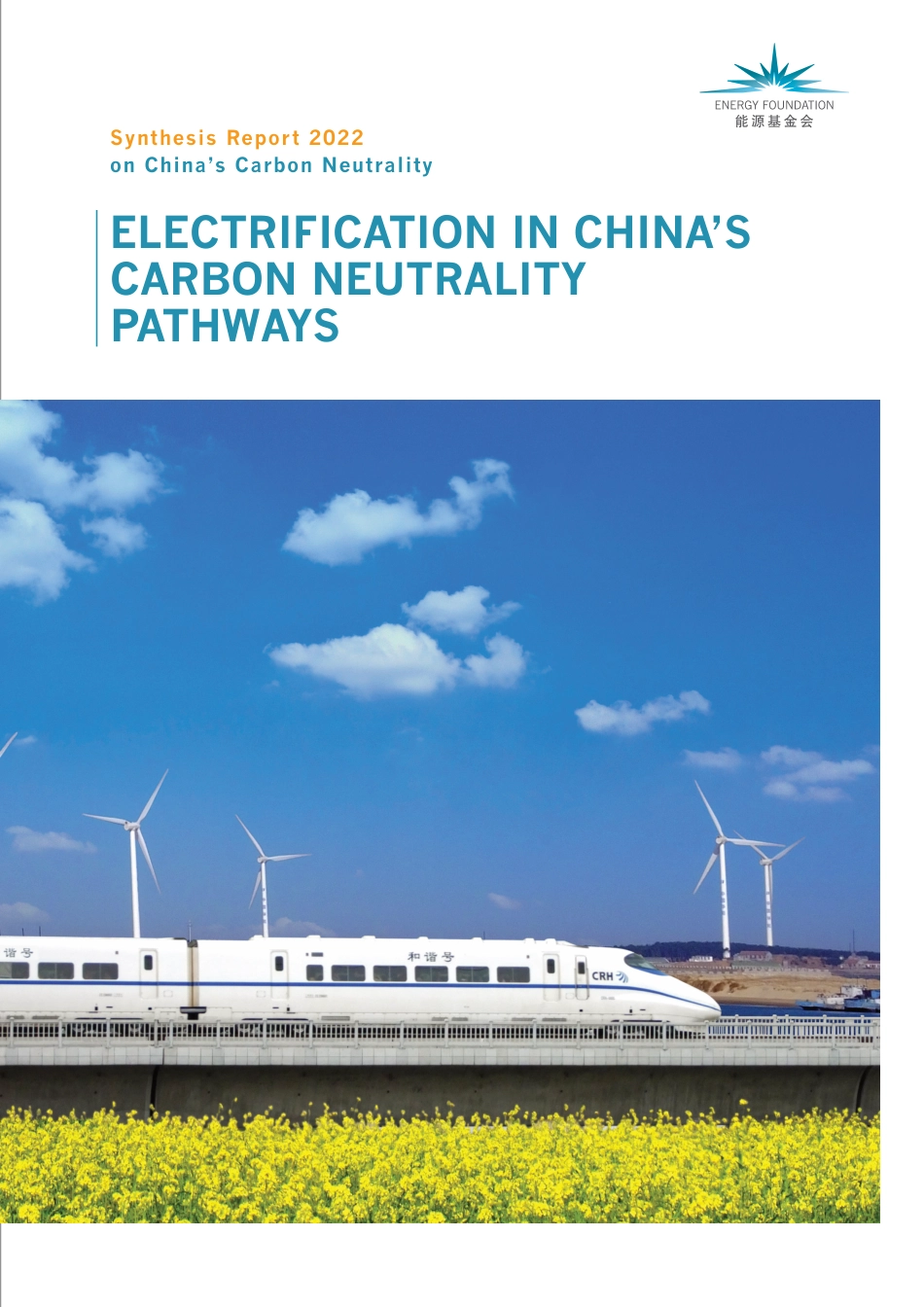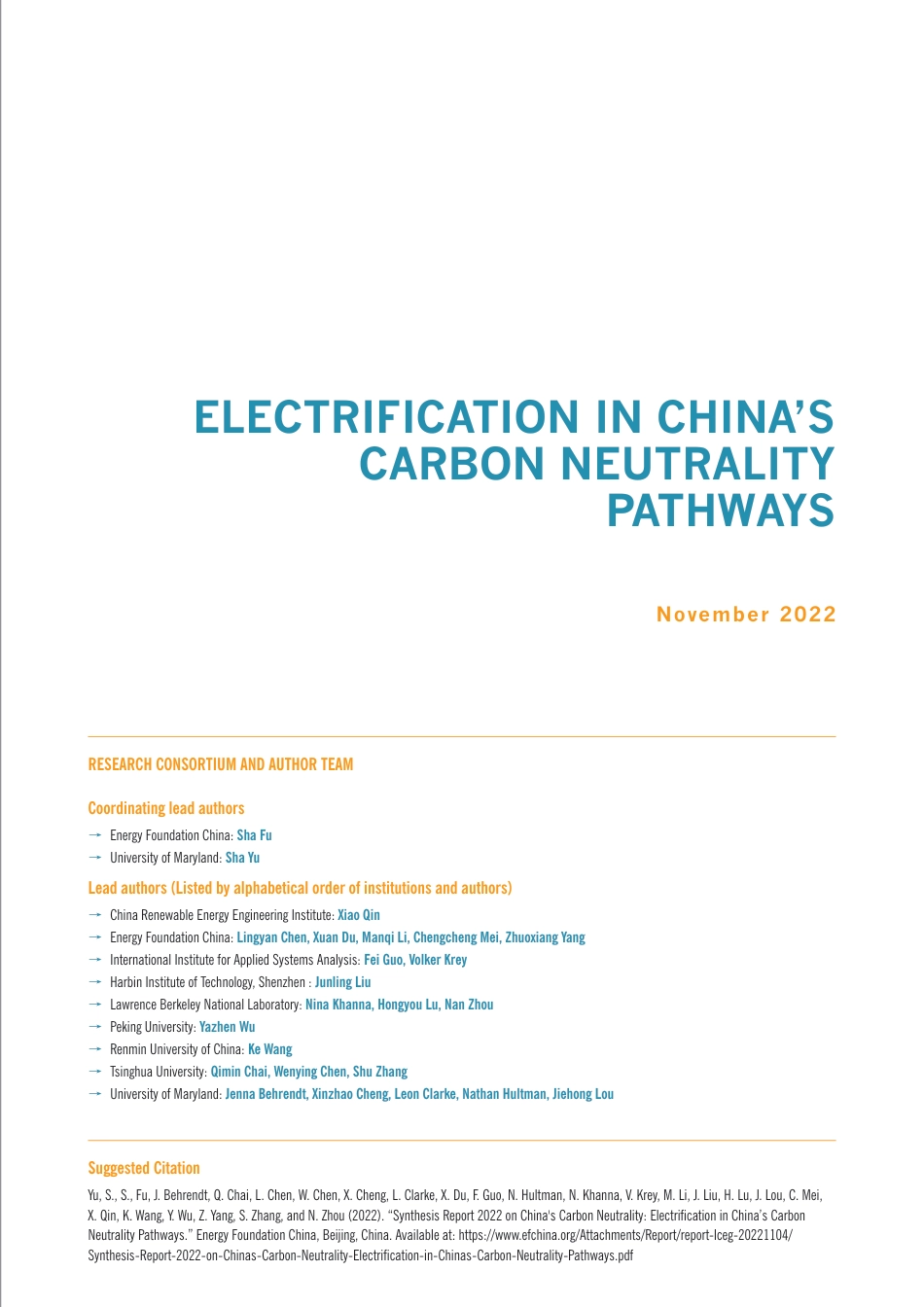ELECTRIFICATION IN CHINA’S CARBON NEUTRALITY PATHWAYSSynthesis Report 2022 on China’s Carbon NeutralityAcknowledgmentsThis report is the result of a collaborative effort between Energy Foundation China and a multi-team research consortium, coordinated by the Energy Foundation China and the University of Maryland Center for Global Sustainability and consolidated by a pool of specialists from both Chinese and international research institutions. The authors also acknowledge the high performance computing resources at the University of Maryland (http://hpcc.umd.edu) made available for conducting the research reported in this paper.Energy Foundation China and the project team would like to thank the reviewers that provide suggestions for improving the framing and analyses of this report.Reviewers (Listed by alphabetical order of last name)Richard Baron Director of the Trade Programme, European Climate Foundation; Executive Director, 2050 Pathways PlatformJae Edmonds Chief Scientist and Battelle Fellow, Pacific Northwest National Laboratory's (PNNL) Joint Global Change Research Institute; College Park Professor of Public Policy, University of MarylandMichael Greenstone Milton Friedman Distinguished Service Professor in Economics; Director of the Becker Friedman Institute and the Interdisciplinary Energy Policy Institute, University of ChicagoAmory Lovins Cofounder and Chairman Emeritus, Rocky Mountain InstituteRobert Stowe Executive Director, Harvard Environmental Economics Program and Co-Director of the Harvard Project on Climate AgreementsMassimo Tavoni Professor of Climate Change Economics, Politecnico di Milano; Director, RFF-CMCC European Institute on Economics and the EnvironmentLord Adair Turner Chairman, Energy Transitions Commission; Sen...



